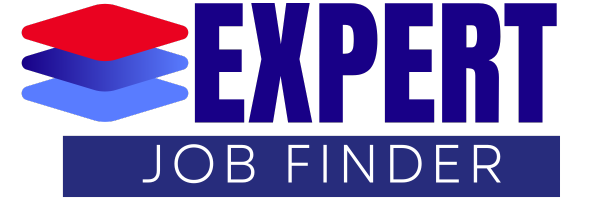Mentoring is a long-term relationship where an experienced person guides a less experienced one. They offer support and feedback to help grow skills and career direction. It’s about long-term career growth, not just solving immediate problems.
Unlike coaching, mentoring combines career advice with personal insights. Mentors share their networks and strategies. This helps mentees move up in their careers over time, not just quickly.
In Australia, many places like universities and big companies have mentor programs. This includes tech, health, and finance sectors. They use mentorship to grow talent and train leaders.
Studies show mentoring leads to better job retention, faster promotions, and happier employees. Companies that invest in mentorship see better productivity and lower turnover.
This article is for Australian professionals looking to grow their careers. It offers tips on finding, keeping, and measuring mentoring relationships. You’ll learn about the benefits, how to develop leaders, and how to overcome challenges.
What mentoring is and why it matters for career advancement
Mentoring connects an experienced pro with someone looking to grow. It includes regular chats, setting goals, and advice on career paths. Mentors also introduce you to their networks and act as role models.
It’s a way to get structured support for your career. Mentors share their career insights and help you understand what it takes to move up. They also give feedback that helps you learn faster.
Sponsorship is different because sponsors push for promotions. While mentors can sponsor, they often focus on broader development like skills and emotional support.
Studies show that mentored employees advance faster and are happier in their jobs. This helps HR create mentor programs that really work.
Mentoring can take many forms, like one-on-one coaching or group mentoring. One-on-one is great for detailed planning. Group mentoring is good for early-career learning. Reverse mentoring helps leaders keep up with new trends.
In Australia, it’s important to be culturally aware. Programs for multicultural teams and Indigenous mentoring need to respect different cultures. Good mentorship values diversity and provides tailored support.
| Type of mentoring | Best use | Primary benefit |
|---|---|---|
| Formal one-to-one | Career pathway planning in organisations | Clear goals, accountability and progress tracking |
| Informal mentoring | Ad-hoc advice and role modelling | Flexible, relationship-driven learning |
| Group mentoring | Skill workshops and cohort development | Peer learning and broader perspectives |
| Peer mentoring | Early-career socialisation and mutual support | Shared experience and quick integration |
| Reverse mentoring | Technology uptake and generational insight | Cross-level learning and cultural renewal |
| Sponsorship | Active promotion for senior roles | Direct advocacy and faster career advancement |
Benefits of mentorship for early-career professionals
Mentorship helps early-career professionals learn faster. A mentor can show them the most important tools and practices. This saves months of learning time and boosts their career growth.
Mentoring gives practical help and advice. New staff get feedback on their work, avoid mistakes and learn industry skills quicker than alone.
Mentors also build confidence. They check in regularly and explain the workplace culture. They offer tips on communication and dealing with stakeholders.
Having a mentor’s network opens up more career paths. It introduces you to colleagues and industry contacts. This helps you get into projects and roles that advance your career.
Mentors help set clear goals. They guide you in making plans and tracking your progress. This lets you see how far you’ve come and adjust your goals.
Graduates with mentors are more employable and stay longer. Studies show they get promotions and stay with their employers. This saves recruitment costs for companies.
In Australia, programs like university schemes and professional bodies offer mentoring. They pair new graduates with experienced professionals. This supports their growth and career advancement.
A comparison shows the benefits for both employers and mentees.
| Metric | Mentored early-career staff | Non-mentored peers |
|---|---|---|
| Time to confidence | 6–12 months | 12–24 months |
| Promotion rate (2 years) | 35%+ | 15–20% |
| Retention at 24 months | 75%+ | 50–60% |
Companies that invest in mentoring see faster growth and better retention. Early-career professionals get the support they need to advance their careers.
Mentoring for leadership training and middle-management growth
Mentoring boosts leadership skills by turning theory into action. A mentor helps build strategic thinking and influencing skills. They do this through real projects and talks.
New managers get hands-on help with delegation and team culture. Mentors teach setting priorities and giving feedback. This reduces the time it takes to advance in a career.
Combine mentoring with structured leadership programs for deeper impact. Formal courses provide frameworks for decision-making. Mentor programs translate these into daily practice.
Sponsor-mentor models offer guidance and advocacy. This combination helps with promotions and keeps top talent. It speeds up career growth and improves retention.
Organisations that use mentoring build a strong leadership pipeline. Companies like BHP and Commonwealth Bank see better leadership and fewer vacancies. This is thanks to mentoring alongside in-house training.
The table below shows the difference mentoring makes in leadership development. It highlights how mentoring impacts career advancement and professional growth.
| Approach | Primary focus | Typical outcomes | Measured impact |
|---|---|---|---|
| Structured leadership course | Frameworks for strategy and decision-making | Improved analytical skills, policy knowledge | 10–20% improvement in assessment scores |
| Mentor program | On-the-job coaching and role modelling | Faster application of skills, better stakeholder management | 15–30% faster promotion velocity |
| Sponsor-mentor hybrid | Advocacy plus development | Access to stretch roles, higher visibility | 25–40% rise in internal moves to senior roles |
| Combined model (course + mentoring) | Structured learning plus applied coaching | Balanced skill growth, sustained behaviour change | 30–50% improvement in leadership readiness |
Creating a mentor program with clear goals and regular reviews makes mentoring measurable. This clarity helps in budgeting for training. It supports lasting growth in middle management.
How mentor matching improves outcomes
Good mentor matching starts with finding the right fit. This means aligning goals, experience, communication style, and availability. This alignment increases the chances of real gains in professional development.
Organisations use different methods to match mentors and mentees. Some use algorithms to match skills and preferences. Others rely on program managers for a more personal touch. Self-selection and speed-mentoring events let participants choose their own connections.
When pairing people, consider clear criteria. Look at career stage, industry experience, and functional expertise. Also, consider cultural background, gender preferences, and shared values to build trust and rapport.
Technology can strengthen a mentor program. Enterprise mentoring software and platforms help capture profiles and find compatible matches. They also track engagement. Analytics help managers refine matching rules based on successful pairs.
Studies show that aligned pairs are more satisfied and achieve their goals better than random matches. Matched mentoring relationships also lead to better retention and clearer career paths. This is when expectations are set from the start.
Program governance is key to a successful relationship. Set clear terms of reference for time commitments, meeting cadence, and review checkpoints. This gives mentors and mentees a structure for timely support and guidance.
Regular check-ins help spot mismatches early. If pairs struggle, offer rematching, mediation, or targeted training. These steps keep the mentoring momentum going and protect the investment in professional development.
Practical steps to find and approach a mentor
First, do a self-assessment. Write down two to four goals for your career and the skills you need to improve. Think about what you want from a mentor, like advice on leadership or help with your career path.
Look for places where experienced people meet. Check your company’s mentor program or HR department. Also, look at industry groups like CPA Australia or the Australian Computer Society. Use LinkedIn and university alumni networks to find mentors. Attend events to meet people in person.
Write a polite message to reach out. Start with how you know them or a shared connection. Say what you hope to get from mentoring and suggest a meeting length, like 30 minutes a month. Mention what you’ll bring to the relationship to show you respect their time.
Make your message clear and concise. Talk about why their experience is important to you and suggest a first meeting agenda. For example, ask for a 30-minute chat to discuss a career choice and get advice on a couple of questions. Keep your tone professional but friendly.
Take advantage of structured opportunities. Join mentoring circles, speed-mentoring sessions, and conferences. These events make it easier to meet mentors. Also, look into formal mentor programs offered by employers or professional bodies. These programs often include support to find a good match.
If you get rejected, don’t take it personally. Send a thank-you note and say you appreciate their response. Ask if they can suggest someone else or if you can follow up later. Keep the door open by sharing a quick update in six to twelve months. Being persistent and flexible can help you find the right mentor.
Once you find a mentor, set clear expectations. Agree on how often you’ll meet, how much time you’ll commit, and if you’ll keep things confidential. Discuss goals you can work on together and how you’ll measure progress. Having clear expectations helps turn your initial contact into a successful mentoring partnership.
Maximising the mentoring relationship for career advancement
Start by setting clear goals and expectations. Create a short mentoring agreement that states objectives, meeting cadence, confidentiality and preferred communication channels. Clear ground rules reduce friction and keep the focus on career advancement.
Use a structured meeting agenda each session. A simple format might include a progress check, current challenges, feedback, skills practice and agreed actions. Ask your mentor or mentee to prepare one item to discuss before each meeting.
Keep feedback active and honest. Two-way feedback builds trust and helps spot performance gaps early. Discuss stretch assignments and realistic timelines so feedback links directly to professional development.
Track progress with basic tools. A one-page log for goals, milestones, actions and outcomes is sufficient. Schedule quarterly reviews to reassess priorities and update the plan as responsibilities shift.
Blend mentorship with coaching and formal training. Mentors can contextualise lessons from a coach or course and show how to apply new skills on the job. Use coaching to target specific skills and mentorship to guide long-term career advancement.
Create opportunities through practical requests. Ask for introductions to relevant contacts, short shadowing sessions or stretch projects that expand scope. Phrase requests clearly, for example: “Could you introduce me to the head of product and suggest a short shadowing day?”
Make the relationship reciprocal. Offer to research topics, share industry reads or assist on a small project. This practical exchange strengthens commitment and keeps momentum for ongoing professional development.
Measuring the impact of mentoring on professional development
First, set clear goals for your mentor program. Look at numbers like how many get promoted, move roles, stay with the company, and are hired internally. Also, check how happy mentees are, their confidence, and if they’ve improved their skills.
Use tools that work for your company to gather data. You can do quick surveys after meetings, ask for feedback from others, track goals, and look at HR stats. A dashboard that shows all this makes it easy to review and understand.
Don’t just look at immediate results. Short-term signs include how often meetings happen, how happy people are, and if they’re reaching their goals. But, also look at bigger things like how fast people get promoted, if there’s a strong leadership team, and if they’re really moving up in their careers.
Share your findings with everyone involved. Show how mentees have grown through examples, and explain how it’s worth the investment. Compare your program to others in the industry to set goals and see where you can get better.
Always be looking to make your program better. Update mentor training, make expectations clearer, improve how you match mentors and mentees, and get more mentors involved. By always improving, you keep mentoring relevant and help people keep growing in their careers.
Overcoming common mentoring challenges
Time constraints often hinder mentor programs. Short, regular meetings and agendas help keep things on track. Options like email or voice notes also allow for support without long sessions.
Expectation mismatches can ruin mentorships. Start with a clear mentoring agreement and have a mid-program review. This helps keep goals and roles in line with professional development.
Building trust and confidentiality takes time. Show reliability and set clear norms for confidentiality. Being open about professional boundaries helps build trust faster.
Diversity and inclusion can limit mentorship reach. Train mentors in cultural competence and include diverse mentors. This shows mentees paths that reflect their backgrounds and goals.
Measuring intangible outcomes like confidence is tough. Use surveys and narrative evidence like journals or notes. This gives a deeper look at professional growth.
Ending mentorships needs careful planning. Have a closure conversation, document achievements, and discuss next steps. A formal wrap-up helps preserve gains and supports ongoing career growth.
| Challenge | Simple Solution | Effect on Mentorship |
|---|---|---|
| Time constraints | Short check-ins, asynchronous updates | Maintains consistent contact and steady progress |
| Mismatched expectations | Mentoring agreement and mid-program review | Aligns goals and prevents drift |
| Trust issues | Set confidentiality norms, keep commitments | Speeds up rapport and honest feedback |
| Diversity barriers | Cultural competence training, diverse mentor pool | Improves relevance and inclusivity |
| Measuring intangibles | Surveys plus narrative evidence | Produces actionable insights on growth |
| Transitioning relationships | Planned closure, document achievements | Ensures clear next steps and sustained development |
Conclusion
Mentoring and mentorship help careers grow by improving skills, networking, and getting specific advice. Good mentoring boosts professional growth through practical learning and feedback. It also prepares people for leadership roles with confidence.
Companies should see mentoring as a key investment. They should link mentor programs with HR and learning systems. Training mentors and matching them carefully can improve results.
For those looking for mentors, first set clear goals for personal growth. Look at workplace programs, groups like the Australian HR Institute, or alumni networks. Then, write a clear message about what you want to achieve and what you’re hoping to learn.
Creating a lasting mentoring culture is crucial. It helps keep talent, builds leadership, and makes companies stronger in Australia’s job market. Track progress, tweak programs, and share results to keep improving professional growth and leadership training.


